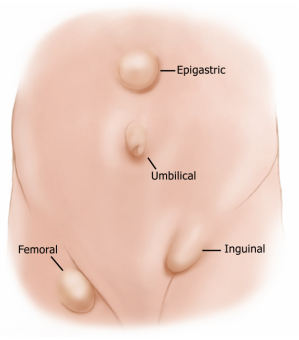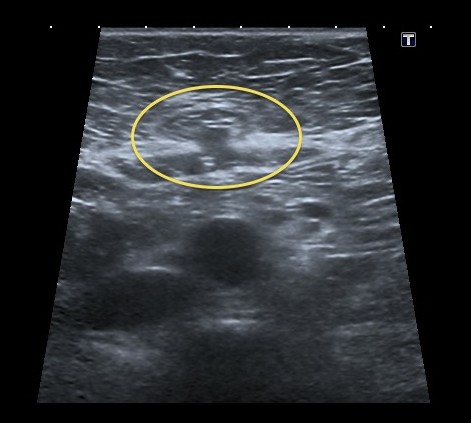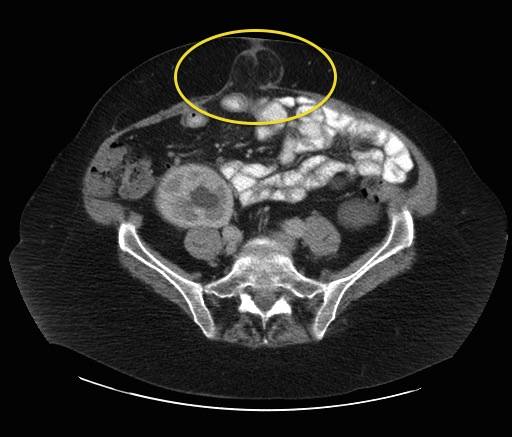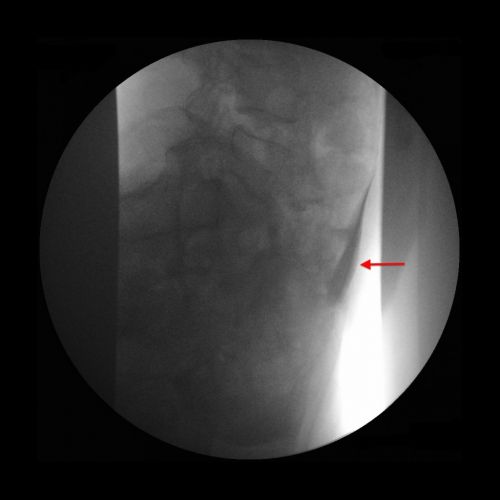Hernia symptoms
The most typical sing of any hernia is bulge. Frequently hernia causes discomfort or pain. Usually, discomfort appears during daily activities (sneezing, lifting, coughing, straining, urination, etc.).

Inguinal hernia symptoms
An inguinal hernia is typically presented as a lump or bulginess in a groin area. The lump usually disappears in lying position or can be pushed in; and again reappears in standing, during coughing or straining.
Femoral hernia symptoms
A femoral hernia sits lower in a groin towards the thigh. This type of hernia is less frequent than inguinal but more common in women. Characteristic presentation is pain, but frequently hernia becomes stuck and requires emergency operation.
Umbilical hernia symptoms
Typically, an umbilical hernia occurs in or around the belly button. A hernia is very common in children, but at this stage usually does not require surgery. In adulthood, women are affected more often, mainly after pregnancy.
Incisional hernia symptoms
This type of a hernia appears at the side of a previous surgical incision. You are most likely to develop this hernia if you underwent major surgery or experienced episode of wound infection after the surgery.
Sportsman’s hernia symptoms
Unlike a traditional hernia, this is not real hernia, because an absence of defect in an abdominal wall. It is result of tear to the muscles or tendons at a groin. This condition is presented by chronic groin pain along the lower abdomen and upper thigh, but with absence of swelling. Pain develops during sport activity, mainly if involves kicking and/or rapid acceleration with sudden change in direction (e.g. football, rugby, tennis, squash) and persist after exercise. Despite any period of rest pain re-appear immediately after resumption of sport.
Hernia complications
Progressively, any hernia grows in size and symptoms; discomfort and pain becomes more intense. But in some cases, untreated hernia causes complications. If part of a bowel becomes stuck in hernia opening, blood supply into the bowel. This is called strangulated hernia and needs emergency surgery. To prevent any complication, elective repair is generally recommended.
Hernia diagnosis
If you have any of hernia symptoms it is advised to visit your doctor. Firstly, the doctor will take your medical history and performs physical examination.
The clinical examination is the standard for diagnosing a hernia. However, in a small number of cases additional tests may be required to further confirm the diagnosis. These tests are usually employed if hernia cannot be identified on examination, to identify hernia complications (strangulation etc.) or for purpose planning a surgery in complex hernias.
The most frequently employed tests:
- Ultrasound is simple and painless test, routinely employed as first option.
- CT (computer tomography) and MRI (Magnetic Resonance Imaging) are advanced studies that gives more detailed information about anatomy.
- Compare to previous tests, Herniogram is invasive examination to diagnose hernia. A dye is injected into abdomen and X-ray pictures are taken.
Ultrasound of abdominal wall: Yellow circle pointing on hernia defect in abdominal wall.

CT abdomen: Yellow circle pointing on hernia defect in abdominal wall.

Herniogram: Red arrow is pointing on dye in abdominal cavity.


